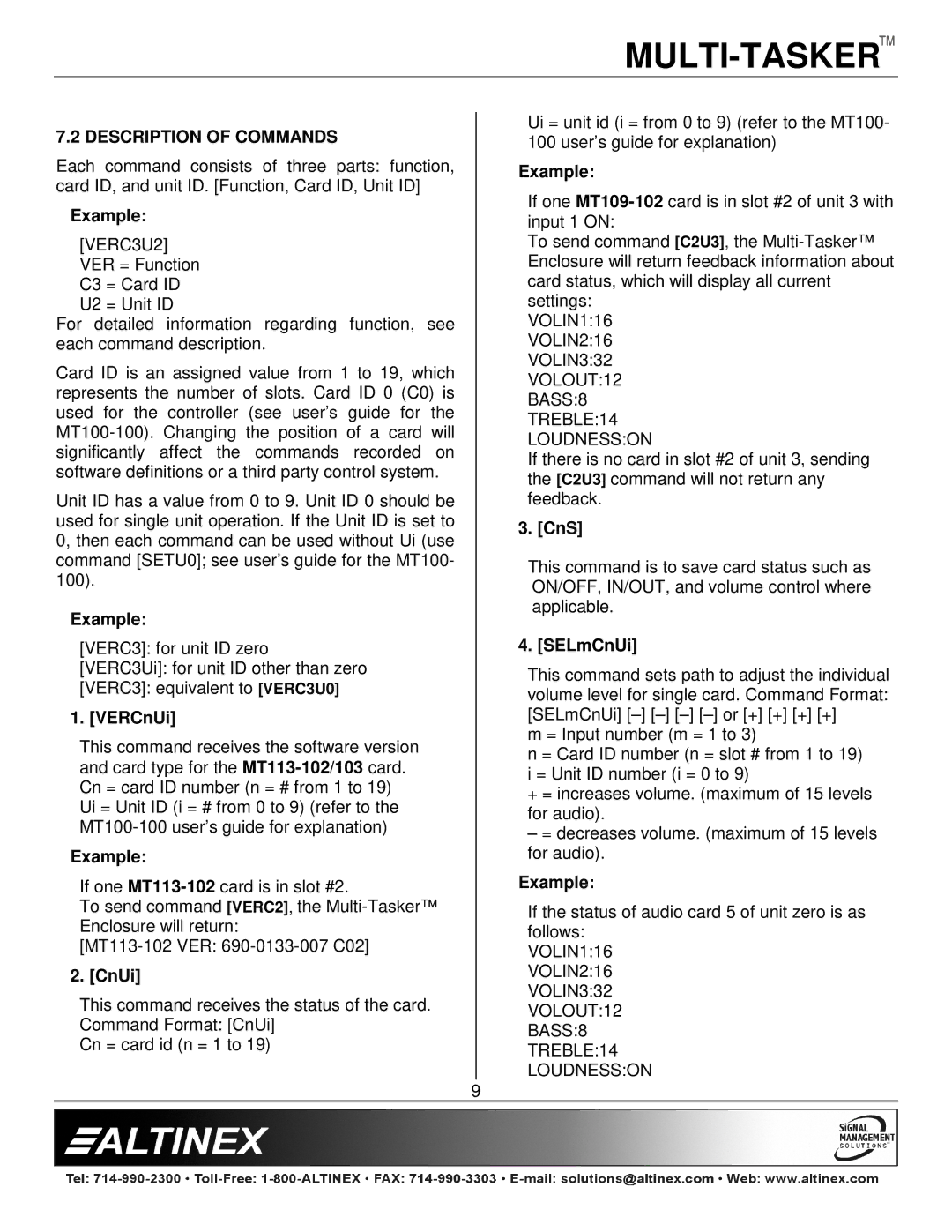
![]()
![]()
![]()
![]()
7.2 DESCRIPTION OF COMMANDS
Each command consists of three parts: function, card ID, and unit ID. [Function, Card ID, Unit ID]
Example:
[VERC3U2] VER = Function C3 = Card ID U2 = Unit ID
For detailed information regarding function, see each command description.
Card ID is an assigned value from 1 to 19, which represents the number of slots. Card ID 0 (C0) is used for the controller (see user’s guide for the
Unit ID has a value from 0 to 9. Unit ID 0 should be used for single unit operation. If the Unit ID is set to 0, then each command can be used without Ui (use command [SETU0]; see user’s guide for the MT100- 100).
Example:
[VERC3]: for unit ID zero
[VERC3Ui]: for unit ID other than zero
[VERC3]: equivalent to [VERC3U0]
1. [VERCnUi]
This command receives the software version and card type for the
Ui = Unit ID (i = # from 0 to 9) (refer to the
Example:
If one
To send command [VERC2], the
2. [CnUi]
This command receives the status of the card. Command Format: [CnUi]
Cn = card id (n = 1 to 19)
9
Ui = unit id (i = from 0 to 9) (refer to the MT100- 100 user’s guide for explanation)
Example:
If one
To send command [C2U3], the
VOLIN1:16
VOLIN2:16
VOLIN3:32
VOLOUT:12
BASS:8
TREBLE:14
LOUDNESS:ON
If there is no card in slot #2 of unit 3, sending the [C2U3] command will not return any feedback.
3. [CnS]
This command is to save card status such as ON/OFF, IN/OUT, and volume control where applicable.
4. [SELmCnUi]
This command sets path to adjust the individual volume level for single card. Command Format: [SELmCnUi]
m = Input number (m = 1 to 3)
n = Card ID number (n = slot # from 1 to 19) i = Unit ID number (i = 0 to 9)
+= increases volume. (maximum of 15 levels for audio).
– = decreases volume. (maximum of 15 levels for audio).
Example:
If the status of audio card 5 of unit zero is as follows:
VOLIN1:16
VOLIN2:16
VOLIN3:32
VOLOUT:12
BASS:8
TREBLE:14
LOUDNESS:ON
9
